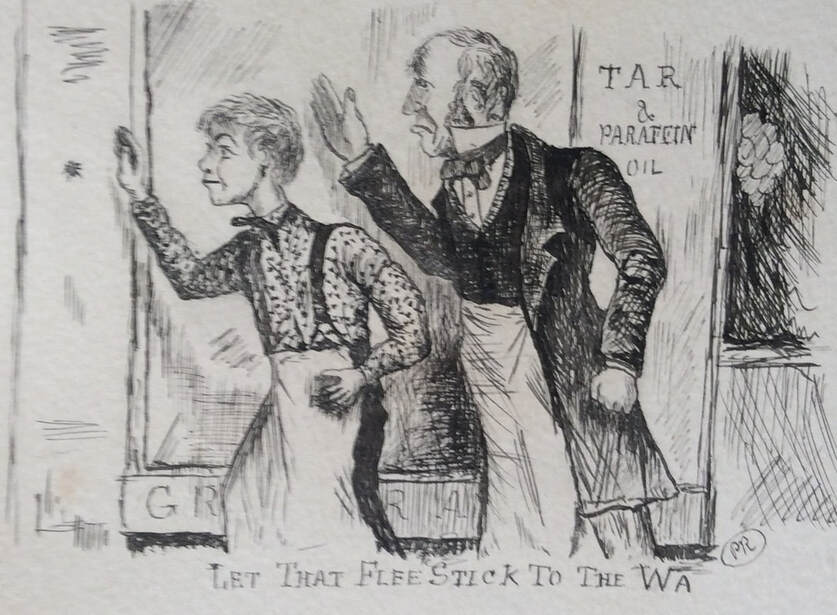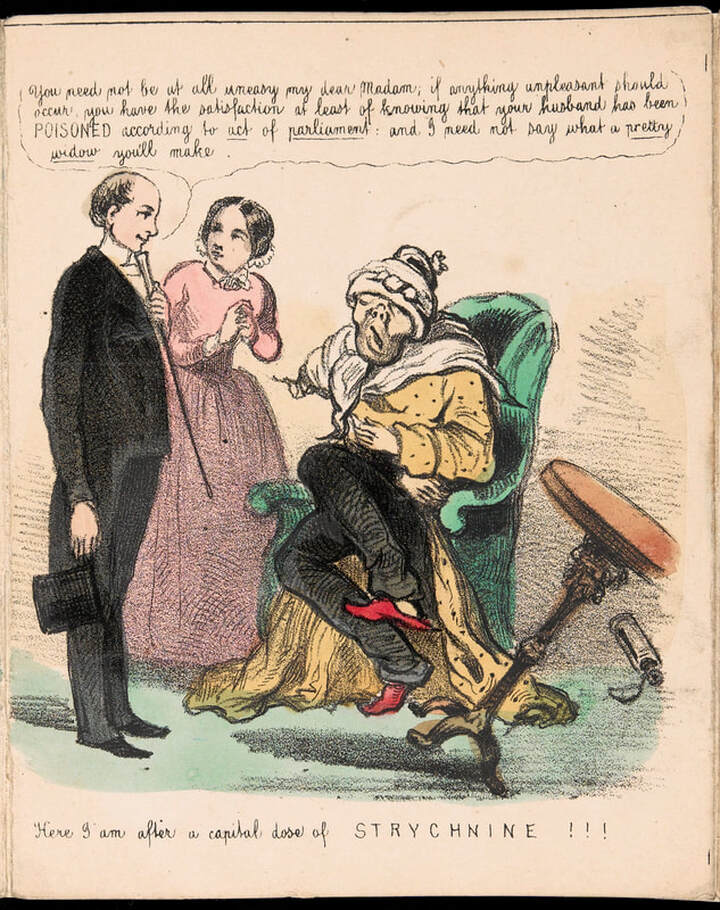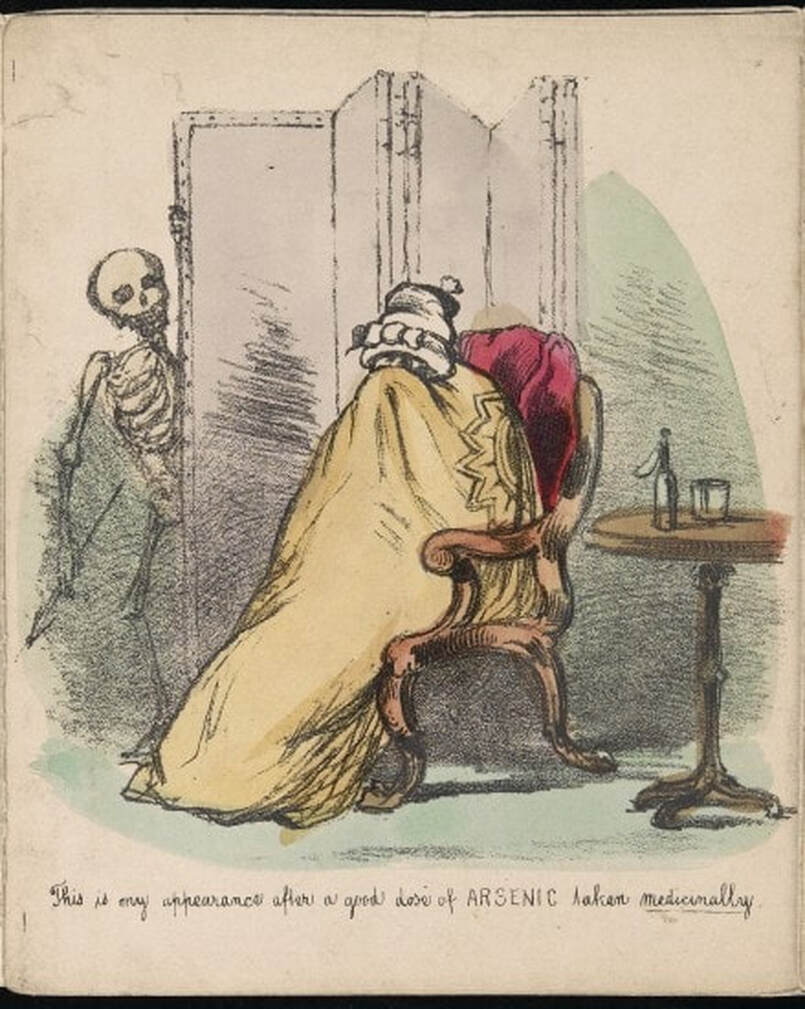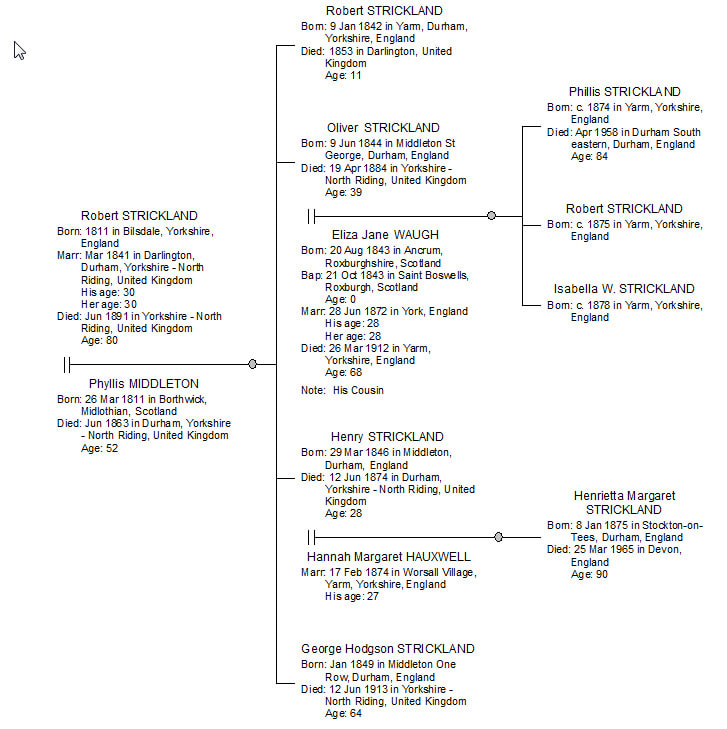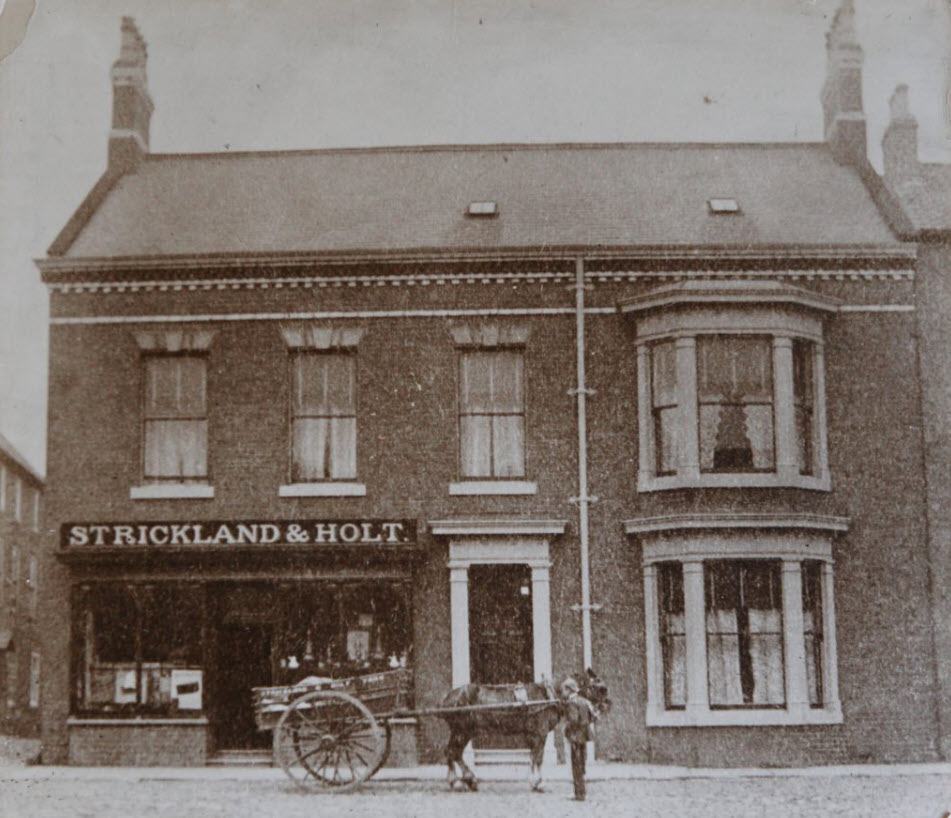The Strickland Family of Yarm - Records of Chemists, Druggists & Pharmacists for the Family HistorianIt can be the smallest thing that sparks a thought (or indeed evokes a memory) and so it was that whilst chatting to my brother the idea came to mind for the topic of this month’s blog. Middleton St George near Darlington cropped up in our conversation to which I mentioned we had relatives who had lived there in times past. ‘Who was that’ he asked. ‘The Middletons’ I said. ‘Never heard of them’ came the reply, as sure and certain as any direct admission could be that he has never read any of my blogs! If he had then perhaps he would have remembered the post of December 2014 and the four Middleton brothers of Strathmiglo who were all lost to war, and other connections that have cropped up in many others. Not that I blame him - family history is not for everyone and very often the preoccupation with pedigrees rather than the lives of the people within them can be pretty dull, two dimensional and boring. Nevertheless, 'Every generation should produce at least one person who is prepared to preserve and enhance the [family] records' wrote Anthony Christopher Middleton of his inability to ‘identify or isolate’ one suitable candidate in the UK in a letter to Philip Aynsley-Smith dated 1992. Philip had been assisting Anthony with his history of the Middleton family, or as he referred to it his ‘Magnus Opus’, by drawing and building on research first assembled by his father George. In the current generation of Smith family and its broader connections I guess that ‘one person’ would be me. As it is some time since I have ventured into ‘Middleton’ territory it is perhaps the time to revisit them and look at some other members of the family who, rather than be farmers, were ‘Chemists & Druggists’. It is also a good opportunity to share some of the interesting and freely accessible record sources that are available for folks with ancestors who followed a similar occupational path. By the mid-1800s, the English chemist and druggist were well-established professionals, defined by their work in a wholesale and retail capacity, and catering to a population before, instead of, or in addition to, the intervention of a GP. Their services were wide ranging and competitive; they sold a variety of items, from toiletries and food to ointments and pills, and were appealing to a paying customer who (at least in the cities) had a choice of establishments to patronise. Despite this, many succeeded in making an excellent living, and had a high standing within their communities. Broadly, they functioned as a medical “first-port-of-call” for many different social classes.[1] Background to the MiddletonsWhilst the Middleton family pedigree stretches back well into the sixteenth century it was during the mid eighteenth century that they first ventured north from the area around Darlington to Norhamshire. The couple making the move circa 1756 was Jonathan Middleton baptised at Haughton-le-Skerne Dec 1726 and his wife Mary Hodgson the daughter of William and Jane Hodgson of Sellaby, Gainsford. For a time they farmed at Norham Mains but connections with home must have been maintained as not only were their children baptised at Haughton-le Skerne but the couple were buried there in 1799 and 1803 respectively. In her letters to GAS, Sarah Nicholson of Horncliffe (1842 – 1932), great granddaughter of Jonathan and Mary states that the Middleton family owned Denton but whether this is actually true has not been determined. It does make an interesting point of discussion, however, as the Culley brothers, the famous agriculturalists who likewise moved to Northumberland, also hailed from Denton. Matthew and George Culley born 1730 ad 1734 would have been contemporaries of Jonathan Middleton and undoubtedly known the family before taking the tenancy of Fenton near Wooler in 1767.[2] The Middleton pedigree is a complicated network of interwoven relationships which is difficult to follow at times. The number of cousin marriages that occurred throughout the generations rivals and possibly even outstrips, that of the Nicholsons with whom along with other families they intermarried several times. For the purposes of this post these complex twists and turns will be kept to an absolute minimum, but I do have the information here should anyone be interested in learning more. Jonathan Middleton and Mary Hodgson had 10 known children, of which their third son Hodgson married ‘the beautiful Phyllis’ daughter of George Smith of Horncliffe and Norham East Mains. Hodgson and Phyllis themselves had seven children, the youngest of which their daughter Phyllis married Robert Strickland, a schoolmaster at Middleton St George, at Darlington in 1841. Robert and Phyllis had four sons, Robert b.1841, Oliver b.1844, Henry b.1846 and George Hodgson Strikland b. 1949. Robert the eldest died aged 11 in 1853. The three remaining brothers joined an emerging group of people, including a few of their cousins who became ‘Chemists and Druggists’. In 1871 the brothers are living together above the retail premises on the east side of the High Street in Yarm. Oliver and Henry are listed as Grocers and Chemists but youngest brother George is listed as a Pharmaceutical Chemist – a notable difference. Also living with them are two apprentices, two servants and another visiting chemist by the name of Sanderson. The ‘Chemist and Druggist’ was an occupation which truly emerged at the beginning of the 19th century in distinction to more the traditional Apothecary. Chemists and Druggists ‘dispensed compounded medicines made to published recipes and pre-packaged ‘patent’ medicines whose contents were secret… Chemist and druggists’ shops sprang up in cities and country towns. Some were scientifically competent, many were not’.[3] In addition to medicines they also sold a variety of other ‘useful’ items including poisons. The following evocative extract, written by Chris Chapman is taken from the Chemist and Druggist website by Chris Chapman who looks at the life of an apprentice in 1859.[4] (More on the website!) t’s a typical store: large shelves are occupied by gleaming jars containing the ingredients of the druggist’s trade. Whale oil is nestled against containers filled with calomel and camphor, while jars hiding lavender, coriander seeds and balsam of Peru occupy the shelf above. The colour of each glass container hints at the contents: a ruddy cobalt hue suggests a syrup, while a mysterious green indicates a poison. The apothecaries on the other hand had moved their focus away from retailing such medicines towards the treating of patients in the role of a general medical practitioner. During the mid 19th century a certain rivalry began to develop between apothecaries, the high street ‘chemist and druggists’ and the newly emerging pharmaceutical chemist which would lead to the establishment and regulation of distinct, yet complementary professions. Between the 1815 Apothecaries Act and the 1858 Medical Act, the practice of medicine became regulated in Britain. Apothecaries became subject to rules regarding training, licensing, and practice. Chemists and druggists were excluded from this licensing, but defined as a distinct profession with their own jurisdiction. Towards the middle of the century, they began pushing for their own regulatory body in order to prevent charges of quackery, and reinforce their medical status. This culminated in the founding of the Pharmaceutical Society in 1841. Schools were then set up to teach pharmacy, and the Pharmacy Acts of 1852 and 1868 helped to regulate the sale of pharmaceuticals, and create uniform standards of training and examination. However, not all chemists and druggists educated themselves in this way, and many continued to learn the ropes via apprenticeship until late in the nineteenth century.[5] The new legislation for Chemist Druggists and Pharmaceutical Chemists introduced both examinations and registration. These new regulations created a paper trail which may be extremely useful to the family historian and many of the records are freely available online. 1. ‘The Chemist and Druggist’ magazine has digitised its collection from the first edition in 1859 through to the discontinuation of the print edition in 2016 and is available through Archive.org.[6] It is a veritable cornucopia of advertisements, business listings as well as the latest ‘medical’ innovations. Only delve in here when you have a few hours to spare! 2. Several editions of ‘The Registers of Pharmaceutical Chemist and Chemists and Druggists’ are also available online through Archive.org. They list details as to the type and date of any examinations passed along with the number of their certificate.[7] The extract below shows George Hodgson Strickland in the 1885 edition and John Holt from the 1919 edition of the Register The Strickland Family & the ‘Strickland & Holt’ Legacy In June 1872 Oliver Strickland married his cousin Eliza Jane Waugh, the daughter of Margaret Middleton and Alexander Waugh, at York. The couple went on to have three children Phyllis, Robert and Isabella Waugh Strickland in 1874, 1875, and 1878 respectively. Oliver’s brother Henry Strickland married Hannah Margaret Hauxwell at Worsal Village in 1874. Henry died just a few months later and the couple’s only child, Henrietta Margaret was born posthumously on 8th January 1875. George Hodgson Middleton has not been located in either the 1891 or 1901 census, but in 1911 he was living at 29 Percy Street Middlesbrough where he died on 12th June 1913. He is listed as unmarried and a ‘smallware salesman’. To date nothing is known about his life after 1881. At some point in time as yet undetermined, Oliver Strickland went into partnership with John Holt and the business became known as ‘Strickland & Holt’. Oliver died on 19th April 1884, it is ‘said’ from a bout of pneumonia he developed as result of rescuing livestock from the River Tees which had burst its banks. (Rather topical given the devastating floods experienced in parts of Yorkshire recently.) His wife Eliza and their daughters Phyllis and Isabella stayed on in Yarm and can be found living in the High Street in the 1891 census together with her widowed father-in-law Robert. Eliza was listed as a Grocer and Chemist so it would seem that she continued to be involved in the business for sometime after her husband's death. The official notification of the dissolution of the partnership appeared in the press in July 1896. However, 'Strickland & Holt' is still operating today from the original premises in Yarm where it is now run by John Holt’s descendants. Their website notes that ‘Today, his [Oliver’s] descendants live in Canada, but the connections and friendship between the two families is kept alive through correspondence and occasional visits.’ They, along with many other families descended from Hodgson Middleton and Phyllis Smith live on today with a goodly dose of Smith and Middleton genes between them! Many are overseas, but there are the others who did not emigrate still living much closer to home. [1] Centre for the History of Medicine, Boston. Apothecaries from the Eighteenth Century Onward: England.
https://collections.countway.harvard.edu/onview/exhibits/show/apothecary-jars/eighteenth-century-england [2] Rowe, D. J. 'The Culleys, Northumberland Farmers, 1767-1813.' The Agricultural History Review, vol. 19, no. 2, 1971, pp. 156–174. https://www.jstor.org/stable/40273786?seq=1#metadata_info_tab_contents. [3] Science Museum http://broughttolife.sciencemuseum.org.uk/broughttolife/people/chemists [4] Chemist and Druggist Website https://www.chemistanddruggist.co.uk/content/day-life-victorian-pharmacist [5] Centre for the History of Medicine, Boston. Apothecaries from the Eighteenth Century Onward: England. https://collections.countway.harvard.edu/onview/exhibits/show/apothecary-jars/eighteenth-century-england [6] Chemist and Druggist Magazine online https://archive.org/details/chemistanddruggist [7] The Registers of Pharmaceutical Chemist and Chemists and Druggists https://archive.org/details/registersofpharm00pharuoft/page/n4
2 Comments
|
AuthorSusie Douglas Archives
August 2022
Categories |
Copyright © 2013 Borders Ancestry
Borders Ancestry is registered with the Information Commissioner's Office No ZA226102 https://ico.org.uk. Read our Privacy Policy
